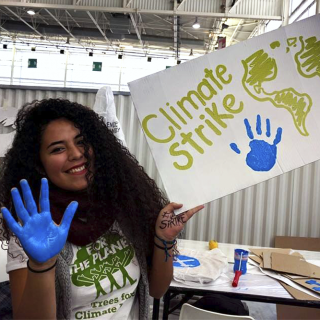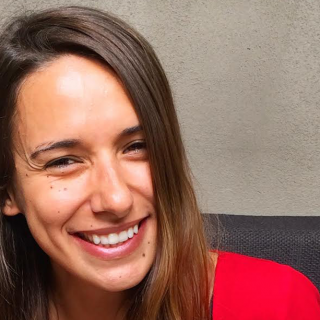You have to be persistent to change the world. Hear “no,” be discouraged, and still keep going with the certainty that it is possible to change reality by working hard and for the good of all. This was the conviction motivating the third-year students at the Pedro de Queiroz Lima State Professional Education High School, in the northeastern Brazilian town of Beberibe. They kept pushing their plan to use coconut fiber in building ecological septic tanks, calling the project, “Ecotank.”
“At first we got a lot of criticism, people said we wouldn’t get anywhere, that no one wants to talk about septic tanks. And this drove us: we will do it just because you don’t believe in us!” jokes Gabriel Lima dos Santos, 18. His colleague Yuri Ramos Gomes, 17, adds, “We knew we had a good project and decided to show everyone it was possible.”
The two started working on Ecotank when they were still in 9th grade, after learning an alarming fact from the Universidade Federal do Ceará. “We started this project when we found out that 90 percent of the water in our community is contaminated,” remembers dos Santos.
The community in question is Prainha do Canto Verde, inside a nature reserve on the state of Ceará’s coastline. In 2012, that municipality was chosen to receive a few conventional septic tanks. However, its terrain consists mostly of sand dunes, meaning the groundwater can be easily contaminated without proper filtering for the sewage, and diseases can spread. To make matters worse, only two conventional septic tanks were built, and the program was suspended due to the high cost of the tanks. “This was when we decided to develop a project that could solve this problem,” says Gomes.
A NATURAL FILTER
To reach their objective, the students concluded that they had to improve upon the design of the conventional septic tank, and they imagined an alternative that was low-cost and sustainable. They had to find a filtering material in the region that could take the place of the gravel used in the conventional tank. After several lab tests and a study conducted with the Universidade Federal do Ceará, the students found that coconut fiber was the solution. “The tank keeps the waste from making contact with the soil, and we can even plant on top of it. So now you don’t have to think that you can’t build a well near a septic tank, because it’s possible if you have an adequate system,” explains Gomes.
Coconut fiber is found in abundance in this coastal region, reducing the cost of the septic tanks by 40 percent (the average cost of an ecotank is R$400, or about US$125). This also reduces the volume of solid waste, since the used coconuts would otherwise be deposited into open-air garbage dumps.
Their teacher, Rafaela Gonzaga Silva, praises the students’ leadership in coming up with a project that addressed a concrete problem in the community and, more importantly, finding a viable solution. “They have learned to make decisions, share, and be persistent.”
More importantly, the youngsters learned to keep their hopes up despite hardship, and to always try to do what is best for everyone. “We want to make people’s lives better. We have encouraged the neighboring communities, and are trying to talk to other towns to bring this idea to more coastal or rural areas,” explains Luã de Oliveira Costa, 18, who joined the project in high school, when Gomes and dos Santos were working to expand their initiative’s reach. “We have to help the world move forward, so that everything happens with harmony, friendship, and unity.”
His project teammates share this view. “The ideal world is one where everyone lives together without prejudice, where we all accept each other for what we are,” says Gomes. His colleague dos Santos adds, “All of this gives me hope to help build a better world.” Maybe these young men don’t realize it, but that building process has already started. And they are its leaders.
The Ecofossa (Ecotank) project was one of the winners of the 2017 Design for Change Challenge. Organized by Alana in Brazil, Design for Change encourages children and young people to transform their realities, recognizing them as the protagonists of their own stories of change. The initiative is part of a global movement that started in India and is now present in 65 countries, inspiring over 2.2 million children and youngsters around the world.
Published on 02/05/2018




